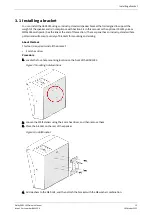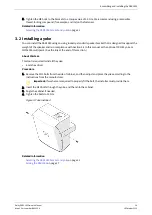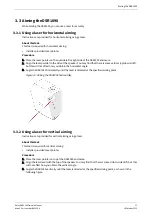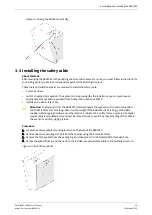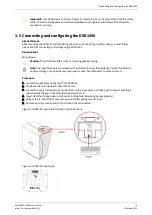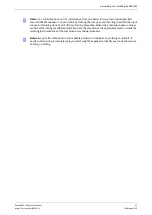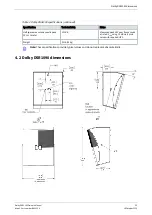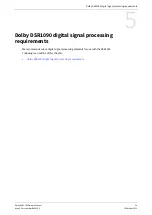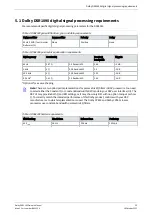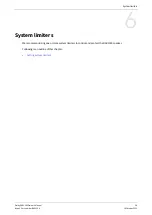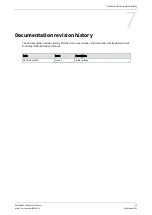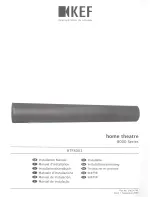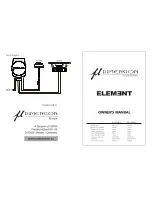
6.1 Setting system limiters
You can use an RMS limiter in a digital signal processor (DSP) to perform the system limiting operation. We
recommend setting up the system limiter thresholds with the proper DSR1090 digital signal processing
parameters engaged. (For DSP parameter details, see the link at the end of this section.)
About this task
We recommend that you set up the system gain structure with the amplifier channel volumes turned all the
way up if the volume setting is easily accessible by any user, such as via a front-panel knob that is not behind
a security panel. Disconnecting the speakers from the amplifier during this process will most likely result in
conservative settings. You can connect the speakers to the amplifier during this process if caution is
observed when increasing the stimulus level and confidence in the measuring setup is secured.
Caution: Speaker damage as a result of exceeding the power-handling specifications, as defined in
the Dolby DSR1090 specifications, is not covered under the warranty.
Caution: Hearing damage can occur by prolonged exposure to an excessive sound pressure level
(SPL); the speaker is easily capable of generating a SPL sufficient to cause permanent hearing damage
to performers, production crew, or audience members. Make sure that you avoid prolonged exposure
to SPL in excess of 90 dB.
We recommend that you set the system limiter for each amplifier channel individually. However, you can
copy the limiter settings to other channels if those channels share identical speaker models, identical
amplifier models, and identical gain structure in the signal path (including any amplifier front-panel volume
controls).
Procedure
1. Connect a wide-bandwidth multimeter with averaging to the amplifier output. A wide-bandwidth meter
has a rated measuring bandwidth of at least 20 kHz with an averaging function that is more than five
seconds (very important for low-frequency outputs).
2. Access the RMS limiter setting in the DSP, and set it to the maximum value, such that no limiting should
occur.
3. Set the attack and release times based on the highpass filter (HPF), according to the recommended digital
signal processing settings for the respective speaker being measured. If that data is not available, we
recommend these HPF settings:
• <30 Hz: Attack 45 ms, release 720 ms
• 30 Hz to 59 Hz: Attack 16 ms, release 256 ms
• 60 Hz to 99 Hz: Attack 8 ms, release 128 ms
• 100 Hz to 224 Hz: Attack 4 ms, release 65 ms
• 225 Hz to 449 Hz: Attack 2 ms, release 32 ms
• 450 Hz to 999 Hz: Attack 1 ms, release 16 ms
• 1 kHz to 1.99 kHz: Attack 0.5 ms, release 8 ms
• >2 kHz: attack 0.3 ms, release 4.8 ms
4. Mute all outputs into the system except for the output you are setting.
5. Play low-level pink noise into the amplifier channel, and confirm that the expected speaker is playing (if
the speaker is connected to the amplifier) and that the multimeter is reading the voltage.
6. While monitoring the meter, slowly turn up the pink noise until the V
rms
is at the published rating.
For low-frequency outputs, an average of at least five seconds at the same pink-noise level is required for
the reading to stabilize. Typically, some amplifier clipping will occur. However, if the amplifier clipping
light is almost solid, stop increasing the pink noise and leave it at a V
rms
level below the published rating.
7. While pink noise is playing at the rated V
rms
(or there is heavy amplifier clipping), turn down the threshold
on the root mean square (RMS) limiter block until the measured V
rms
goes down slightly.
Setting system limiters
Dolby DSR1090 Owner's Manual
27
Issue 1 Part number: 8800304
16 October 2022



